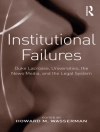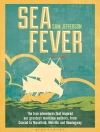After Dark Wilkie Collins – After Dark is Wilkie Collins’s first collection of six short stories, published in 1856. The book is a series of tales supposed to be told to poor travelling portrait-painter, William Kerby, who is forced to abandon his profession for six months in order to save his sight.Collins provides a narrative framework, which tells us how the painter came to think of publishing the stories, (Kerbys wife Leah realizes that if she acts as amanuensis William can support them by turning author), how they were collected (from the people who sat for him to have their portraits painted) and descriptions of the circumstances under which the tales were told. The tales are stories of adventure, well varied, and often striking in the incidents, or with thrilling situations; and are as pleasant reading as a novel reader could desire.
About the author
A close friend of Charles Dickens from their meeting in March 1851 until Dickens’ death in June 1870, William Wilkie Collins was one of the best known, best loved, and, for a time, best paid of Victorian fiction writers. But after his death, his reputation declined as Dickens’ bloomed.Now, Collins is being given more critical and popular attention than he has received for 50 years. Most of his books are in print, and all are now in e-text. He is studied widely; new film, television, and radio versions of some of his books have been made; and all of his letters have been published. However, there is still much to be discovered about this superstar of Victorian fiction.Born in Marylebone, London in 1824, Collins’ family enrolled him at the Maida Hill Academy in 1835, but then took him to France and Italy with them between 1836 and 1838. Returning to England, Collins attended Cole’s boarding school, and completed his education in 1841, after which he was apprenticed to the tea merchants Antrobus & Co. in the Strand.In 1846, Collins became a law student at Lincoln’s Inn, and was called to the bar in 1851, although he never practised. It was in 1848, a year after the death of his father, that he published his first book, ‘The Memoirs of the Life of William Collins, Esq., R.A’., to good reviews.The 1860s saw Collins’ creative high-point, and it was during this decade that he achieved fame and critical acclaim, with his four major novels, ‘The Woman in White’ (1860), ‘No Name’ (1862), ‘Armadale’ (1866) and ‘The Moonstone’ (1868). ‘The Moonstone’, is seen by many as the first true detective novel T. S. Eliot called it ‘the first, the longest, and the best of modern English detective novels …’ in a genre invented by Collins and not by Poe.












